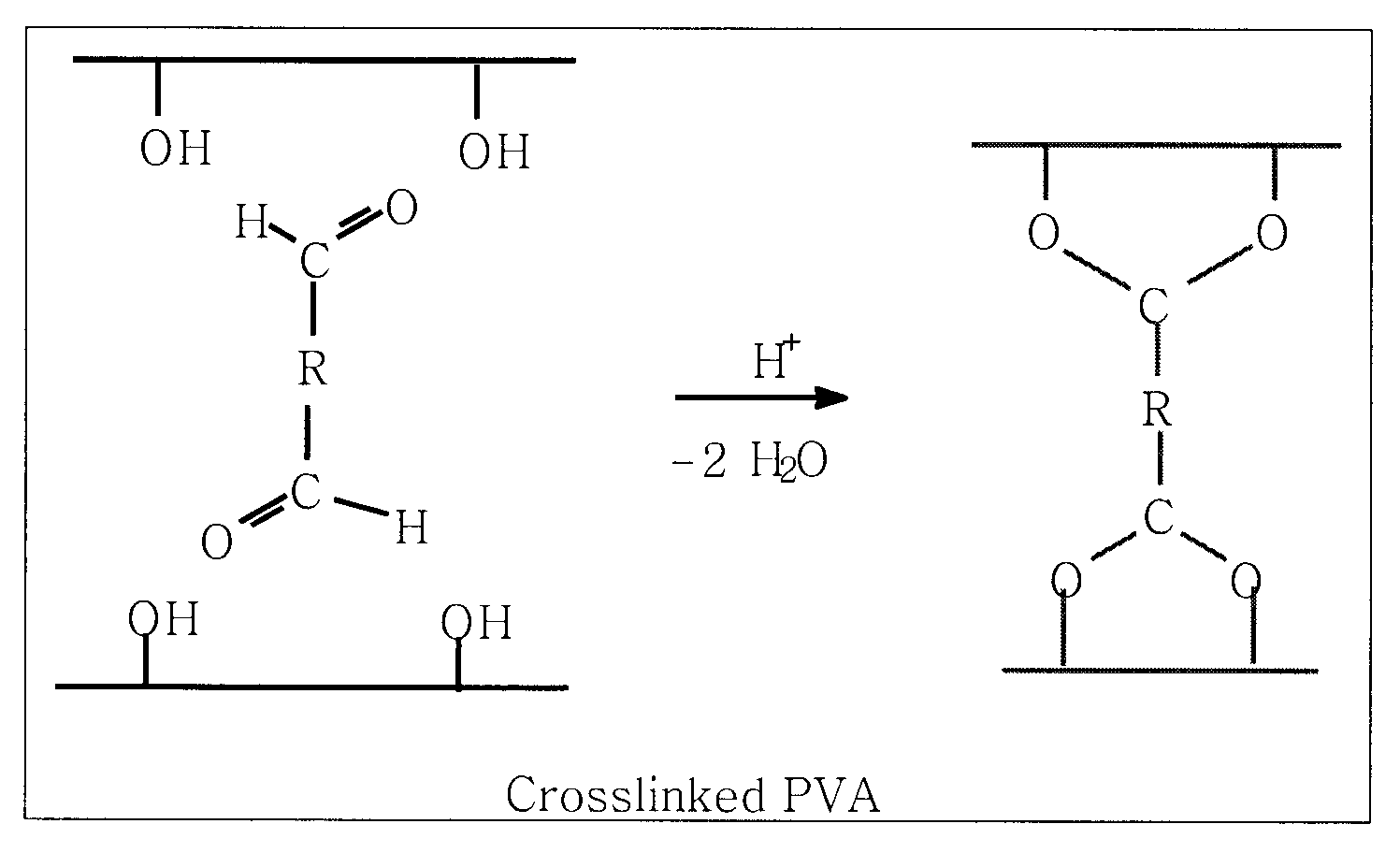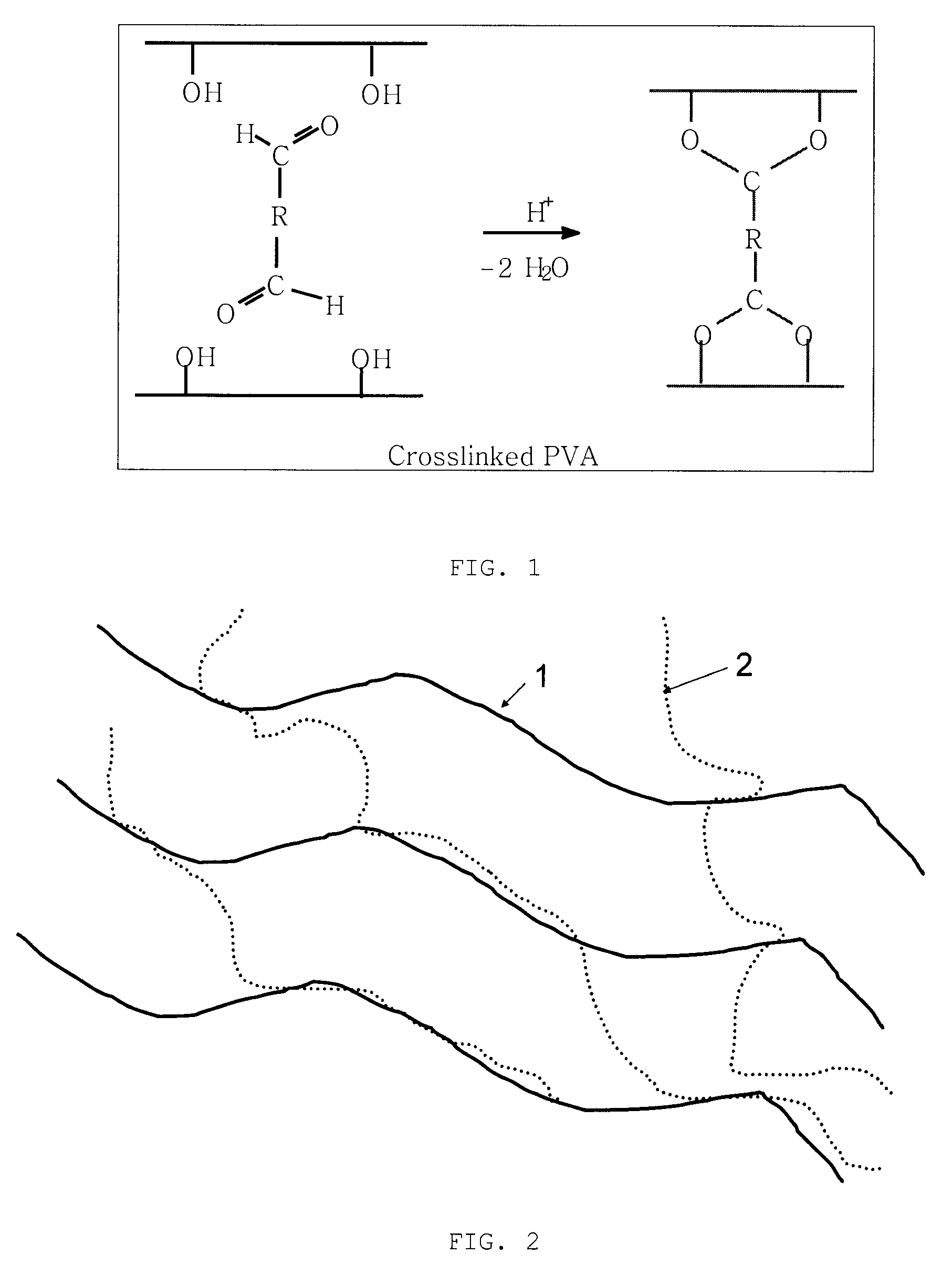Polymer membrane utilized as a separator in rechargeable zinc cells
- Summary
- Abstract
- Description
- Claims
- Application Information
AI Technical Summary
Benefits of technology
Problems solved by technology
Method used
Image
Examples
Embodiment Construction
[0040]In describing the preferred and selected alternate embodiments of the present invention, as illustrated in FIGS. 1-2, specific terminology is employed for the sake of clarity. The invention, however, is not intended to be limited to the specific terminology so selected, and it is to be understood that each specific element includes all technical equivalents that operate in a similar manner to accomplish similar functions.
[0041]Zinc cells have excellent characteristics, while short cell cycle life prevents their widespread application as secondary batteries. Previously, as shown in FIG. 1 illustrating cross-linked PVA utilized in prior art to make membrane separators for rechargeable zinc cells, it had been found that diffusion of water in a membrane during processing and the subsequent drying out of the membrane will result in an open pore structure in the membrane that permits dendrites to pass through the separator. Retention of water within a membrane while providing a dens...
PUM
 Login to View More
Login to View More Abstract
Description
Claims
Application Information
 Login to View More
Login to View More - R&D
- Intellectual Property
- Life Sciences
- Materials
- Tech Scout
- Unparalleled Data Quality
- Higher Quality Content
- 60% Fewer Hallucinations
Browse by: Latest US Patents, China's latest patents, Technical Efficacy Thesaurus, Application Domain, Technology Topic, Popular Technical Reports.
© 2025 PatSnap. All rights reserved.Legal|Privacy policy|Modern Slavery Act Transparency Statement|Sitemap|About US| Contact US: help@patsnap.com


